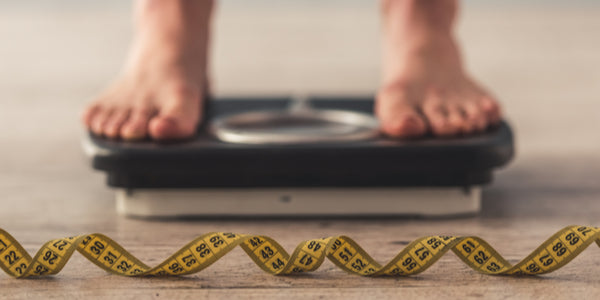
The "heart attack diet"—sometimes referred to as the DASH or cardiac diet—is a vital part of revitalizing the heart. If you’re seeking advice on your diet after a heart attack and stents, a sample heart attack diet menu can give you much-needed guidance to jumpstart your journey.
A diet limited in added sugars, fat, and salt can support long-term health for years to come. Read on to find healthy eating tips and a sample diet for after a heart attack.
What Is a Heart Attack?
A heart attack happens when blood flow to the heart is severely restricted (or blocked altogether). This blockage often occurs when substances like fat or cholesterol build up in the artery, contributing to a condition called coronary artery disease (CAD).
The longer this blockage goes untreated, the greater the lack of oxygen and needed nutrients getting to the heart muscle.
The most common cause of a heart attack is CAD, and according to the American Heart Association, the most recognizable symptoms of a heart attack are:
• Chest discomfort
• Discomfort in other areas (i.e. back, neck, jaw, stomach)
• Shortness of breath
Women may experience different symptoms than men, such as breaking into a cold sweat, experiencing lightheadedness, or fatigue beyond normal tiredness.
A doctor can help you identify potential symptoms based on your gender or age, and attending your appointments and having regular blood work drawn (i.e. to check cholesterol levels) may also be helpful.
Additionally, assessing lifestyle factors, like diet, exercise, sleep, and stress can also help you to understand if you are at increased risk for heart attack. Making lifestyle adjustments can also help you live in a healthier way if you’ve already had a heart attack.
About 1 in 5 people who have had a heart attack will be readmitted for another one within 5 years, meaning it is important to make meaningful changes.
Heart Attack Diet: Foods to Limit
The heart attack diet, sometimes called the cardiac diet, focuses on reducing fat and cholesterol—the substances that contribute to blockages. On a heart attack, it’s recommended to limit or avoid the following:
• Added sugars (i.e. sugar-sweetened beverages)
• Alcoholic beverages
• Excessive salt
• High-fat foods
• Processed foods and processed meats
This means you need to minimize foods like full-fat dairy products and opt for low-fat or fat-free options. Looking at the label, you’ll want to make sure the foods you select are low in saturated fat—known as the “unhealthy” kind of fat.
Keep in mind that foods like condiments can be sneaky, and it doesn’t hurt to ask about low-sodium or sugar-free varieties (especially when eating out).
Heart Attack Diet: Foods to Eat More Of
Fortunately, there are many foods you can eat on a heart attack diet. Instead of focusing on what you can’t eat, try incorporating more of the following foods into your daily diet:
• Fruits and vegetables
• Healthy fats (like avocado, nuts and seeds, olive oil)
• Lean meats and lean protein (i.e. legumes, seafood, skinless poultry)
• Reduced-fat dairy
• Seasonings, such as herbs (as opposed to salt)
• Whole grains, including brown rice)
While you don’t need a formal diet to follow in order to make heart-healthy choices, the Mediterranean Diet is often suggested.
The DASH diet is also considered to be an appropriate diet as a treatment for or prevention of heart attacks. In fact, the DASH diet is often called the heart attack diet since it focuses on reducing high blood pressure caused by plaque buildup.
7-Day Heart Attack Diet Menu
Struggling to find heart-healthy diets? Look no further than the following sample menu to get started.
Day 1
• Breakfast:Berry Powerful Plant-Based Yogurt Bowl
• Lunch: Mediterranean Quinoa Salad
• Dinner: Baked Tilapia with Tomato Caper Sauce
• Snack: Perfectly Spiced & Baked Cinnamon Apples
Day 2
• Breakfast: Caramelized Onion & Chickpeas Savory Breakfast Oats
• Lunch: Mason Jar Superfood Salad
• Dinner: Whole Wheat Penne with Vegan Cashew Alfredo Sauce and Mashed Cauliflower with Mushroom Gravy
• Snack: 1-2 slices healthy banana bread
Day 3
• Breakfast: Apple cinnamon overnight oats
• Lunch: White Beans Salad with Spinach, Garlic & Sun-Dried Tomatoes
• Dinner: Cheesy Broccoli Cheddar Stuffed Chicken with Cauliflower Gratin with Feta & Olives
• Snack: Roasted Garlic Hummus in Cucumber Cups
Day 4
• Breakfast: Artichoke, Spinach & Roasted Red Pepper Frittata
• Lunch: Teriyaki Chicken with Easy Sesame Roasted Carrots and brown rice
• Dinner: Creamless Cream of Cauliflower Soup with Grilled Vegetable Salad with Herb Dressing
• Snack: Yummy Sesame Sugar Snap Peas
Day 5
• Breakfast: Peach, Raspberry & Basil High-Protein Smoothie
• Lunch: Greek Stuffed Peppers
• Dinner: Chicken & Garden Vegetable Lasagna made with whole wheat, legume, or vegetable-based noodles
• Snack: Black and White Healthy Nut Mix
Day 6
• Breakfast: Cinnamon Apple Pancakes
• Lunch: Mason Jar Southwestern Taco Salad
• Dinner: Healthy Parmesan Shrimp Risotto
• Snack: Honey Drizzled Broiled Grapefruit
Day 7
• Breakfast: Healthy & Simple Chocolate Banana Protein Shake
• Lunch: Mason Jar Rainbow Quinoa Salad
• Dinner: Veggie Burgers
• Snack: Healthy Apple Nachos
If you’re in a busy phase of life where making home-cooked meals is nearly impossible, bistroMD’s heart-healthy program may be the answer. Meal delivery can help take the stress out of meal planning, especially if the meals contain heart-healthy ingredients and support your wellness goals.
Heart Attack Diet: Final Takeaways
Diet is a crucial component of heart health. An abundance of foods like fruits, vegetables, lean meats, legumes, and whole grains can help fortify one of the most important muscles against a cardiac event.
If avoiding processed foods, saturated fats, and added sugars is difficult for you, a meal plan or meal delivery service may make eating heart-healthy meals each day easier.






